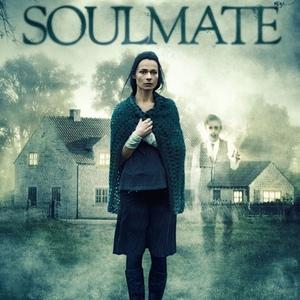I’m a huge admirer of the works of NIGEL KNEALE. I’ve spoken before about my love of his most famous creation – QUATERMASS – and I’ve long intended to take another look at some of his other projects. A while back a friend of mine (thanks Roy!) sent me a copy of the 1972 BBC TV play THE STONE TAPE, and I recently rewatched it. It’s horrifically dated (in more ways that one), but still packs a decent punch. I normally include the trailer for movies I recommend, but on this occasion, I might have accidentally embedded the whole film below.
A research team from an electronics company moves into an old Victorian house to start work on finding a new recording medium. When team member Jill Greeley witnesses a ghost, team director Peter Brock decides not only to analyse the apparition, which he believes is a psychic impression trapped in a stone wall (dubbed a “stone tape”), but also to exorcise it–with terrifying results.
Along with JOHN WYNDHAM, NIGEL KNEALE occupies a special place in my heart. Both were ahead of the pack, producing genre dramas with a more intelligent, science-based focus than many other writers of the time. It’s something that’s always appealed to me – whenever I’m working on a story, I want to be able to understand the logic of why something is happening, even if that logic is as trumped up as the story itself. A case in point is the original AUTUMN novel, which was written as an attempt to apply some logic to the behaviour of the undead in the zombie apocalypse, despite the zombie apocalypse being an inherently illogical and implausible scenario. Why do the dead herd? Why are they attracted to the living? What can the survivors learn about their behaviour in order to keep themselves alive? Like the early QUATERMASS stories that preceded it, in THE STONE TAPE, KNEALE takes a similar approach towards proving the existence of ghosts.
Incidentally (and forgive me for relying on a Wikipedia article here), the idea of psychic phenomena being ‘recorded’ into stone and other materials was first mooted in the nineteenth century. Later known as ‘the Stone Tape theory’, it’s testament to the popularity (notoriety?) of Kneale’s play that this production is now more notorious and well-remembered than the concept that inspired it.
A supernatural apparition is discovered in an abandoned room in an old Victorian mansion now repurposed as a scientific research facility. That a psychic event has been witnessed is never questioned – the scientists gathered there are more interested in understanding how they’re seeing what they can see, and whether or not they can exploit the phenomenon for their own gain. He uses the characters’ preconceptions, opinions, desires, and egos to peel back layer after layer until the truth is finally revealed. The story takes place at that point where the paranormal collides with technology and reason, and what KNEALE does best is focus in on the conflict that almost always occurs whenever beliefs are challenged by evidence.
As I’ve posted the whole play here, I’ll not say too much more about THE STONE TAPE. It remains a creepy and thought-provoking drama and I hope you’ll watch and enjoy it. An important word of warning, though – the production is horrifically dated in many respects. There’s the expected tackiness of its 1970s setting – the massive computers, Day-Glo fashions, the wobbly set walls etc – but there are also more troubling holdovers of a programme made fifty years ago, namely the misogyny and racism which were acceptable at the time but which are now offensive and uncomfortable to watch.
Thanks for reading.
Over the years I’ve recommended many films, books, and podcasts. You can find a full list of them here.
A lot of folks find their way to this site from search engines and social media via these recommendations. If you’re new here, let me introduce myself – I’m DAVID MOODY, author of dystopian horror and science-fiction. I’m best known for the HATER and AUTUMN novels, but you can find all my books here.
If you sign up to my mailing list, I’ll send you some free books to get you started.
My latest novel is SHADOWLOCKED – you can find out about it here.


